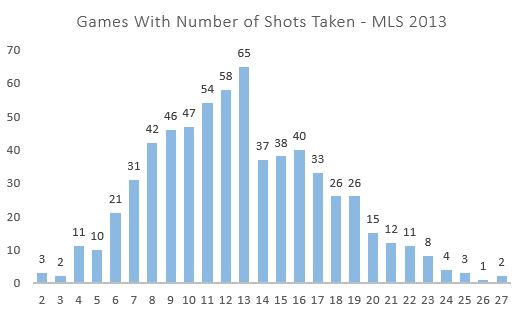Introducing Expected Goals 2.0 and its Byproducts
/Many of the features listed below from our shot-by-shot data for 2013 and 2014 can be found above by hovering over the "Expected Goals 2.0" link. Last month, I wrote an article explaining our method for calculating Expected Goals 1.0, based only on the six shot locations. Now, we have updated our methods with the cool, new, sleek Expected Goals 2.0.
Recall that in calculating expected goals, the point is to use shot data to effectively suggest how many goals a team or player "should have scored." This gives us an idea of how typical teams and players finish, given certain types of opportunities, and then allows us to predict how they might do in the future. Using shot locations, if teams are getting a lot of shots from, say, zone 2 (the area around the penalty spot), then they should be scoring a lot of goals.
Expected Goals 2.0 for Teams
Now, in the 2.0 version, it's not only about shot location. It's also about whether or not shots are being taken with the head or the foot, and whether or not they come from corner kicks. Data from the 2013 season suggest that not only are header and corner kick shot totals predictive of themselves (stable metrics), but they also lead to lower finishing rates. Thus, teams that fare exceptionally well or poorly in these categories will now see changes in their Expected Goals metrics.
Example: In 2013, Portland took a low percentage of its total shots as headers (15.4%), as well as a low percentage of its total shots from corner kicks (12.3%). Conversely, it allowed higher percentages of those types of shots to its opponents (19.2% and 15.0%, respectively). Presumably, the Timbers' style of play encourages this behavior, and this is why the 2.0 version of Expected Goal Differential (xGD) liked the Timbers more so than the 1.0 version.
We also calculate Expected Goals 2.0 contextually--specifically during times periods of an even score (even gamestate)--for your loin-tickling pleasure.
Expected Goals 2.0 for Players
Another addition from the new data we have is that we can assess players' finishing ability while controlling for the various types of shots. Players' goal totals can be compared to their Expected Goals totals in an attempt to quantify their finishing ability. Finishing is still a controversial topic, but it's this type of data that will help us to separate out good and bad finishers, if those distinctions even exist. Even if finishing is not a repeatable skill, players with consistently high Expected Goals totals may be seen as players that get themselves into dangerous positions on the pitch--perhaps a skill in its own right.
The other primary player influencing any shot is the main guy trying to stop it, the goalkeeper. This data will someday soon be used to assess goalkeepers' saving abilities, based on the types of shot taken (location, run of play, body part), how well the shot was placed in the goal mouth, and whether the keeper gave up a dangerous rebound. Thus for keepers we will have goals allowed versus expected goals allowed.
Win Expectancy
Win Expectancy is something that exists for both Major League Baseball and the National Football League, and we are now introducing it here for Major League Soccer. When the away team takes the lead in the first 15 minutes, what does that mean for their chances of winning? These are the questions that can be answered by looking at past games in which a similar scenario unfolded. We will keep Win Expectancy charts updated based on 2013 and 2014 data.























